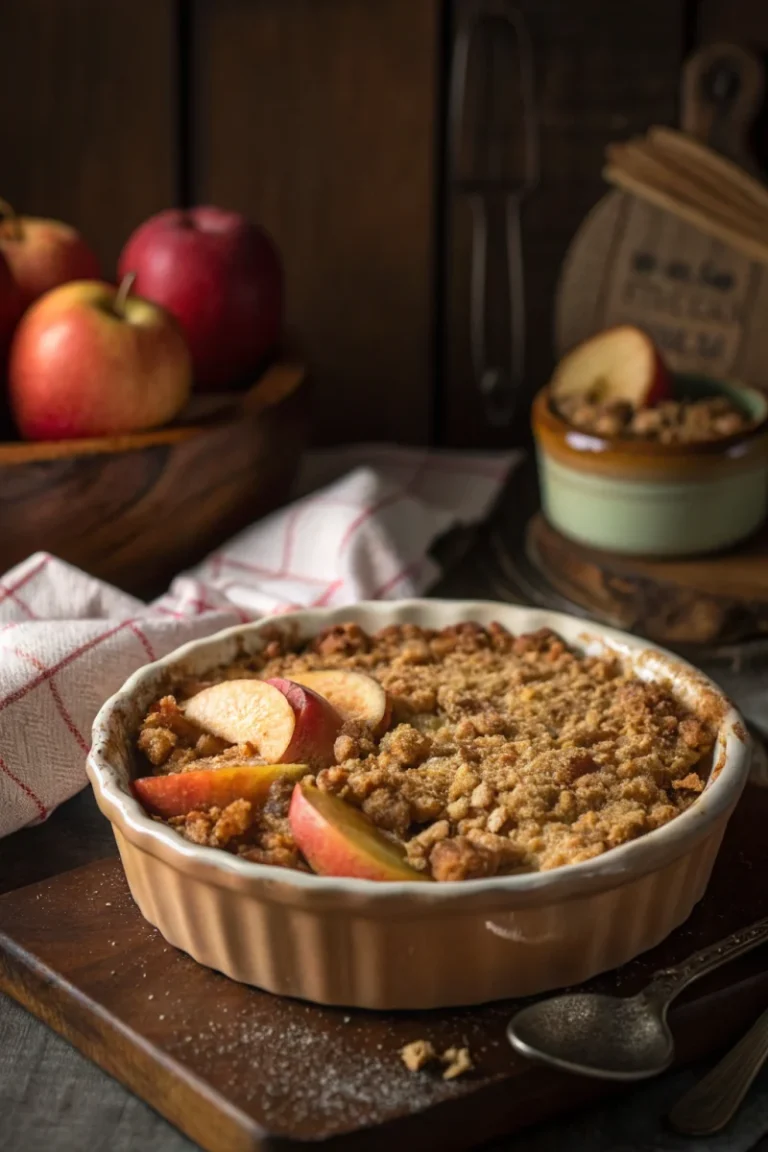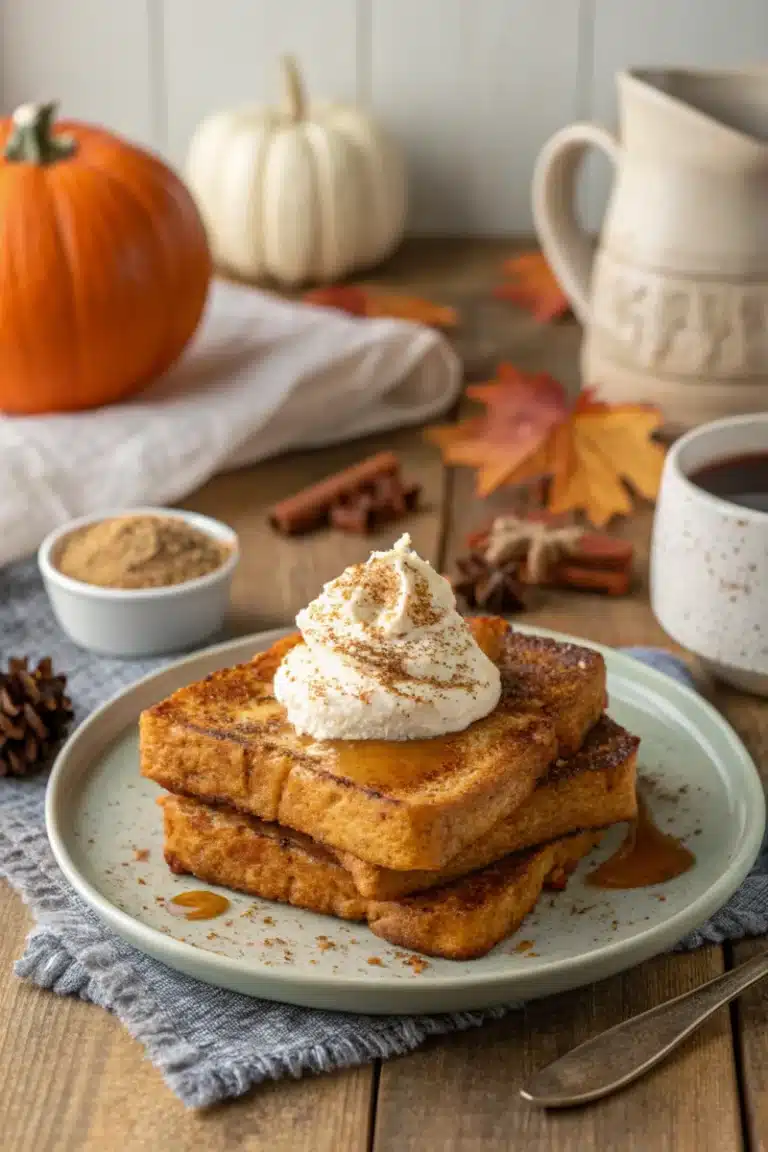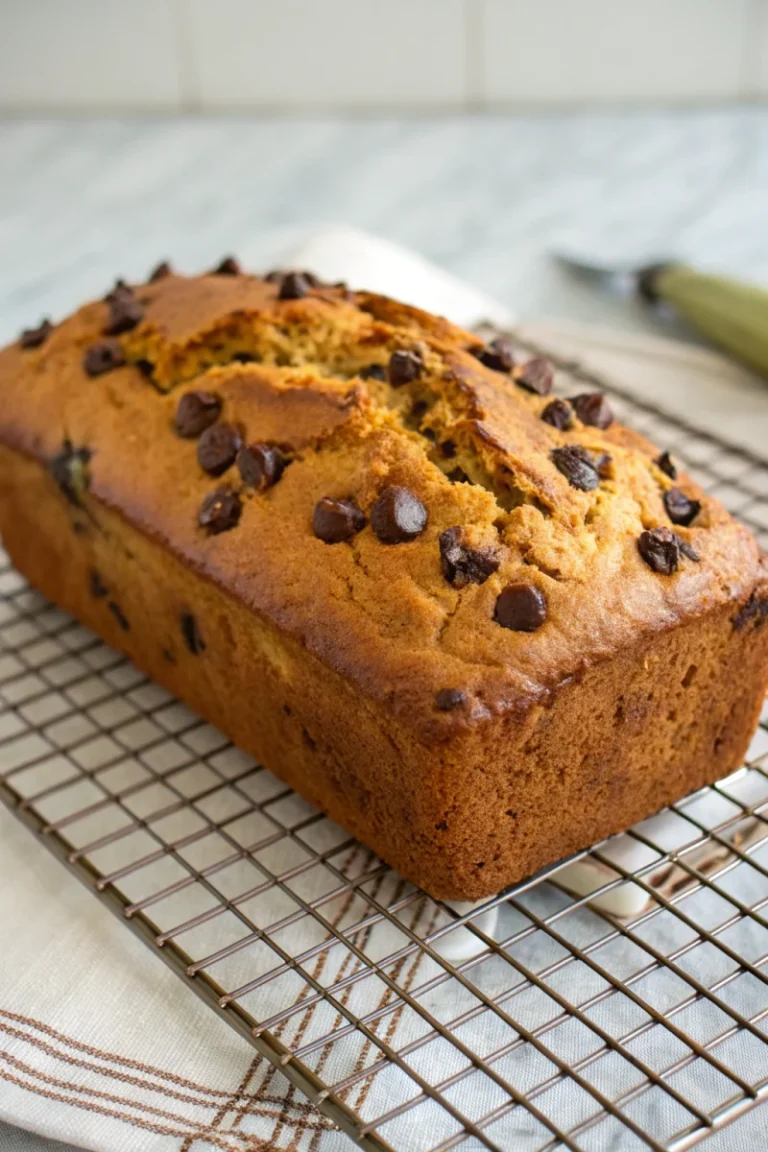Simple Persimmon Upside-Down Cake Recipe for a Delicious Autumn Treat
Seasonal Baking — The Ultimate Comfort Soup for Cozy Evenings
Seasonal Baking combines heartiness, warmth, and nutrition in one bowl. This guide reveals how to make the perfect winter soup — comforting, wholesome, and deeply flavorful, crafted with chef-level technique and family-friendly ease.
Why Seasonal Baking Matters in Winter
During cold months, the body craves warmth and hydration. Seasonal Baking offers both, blending nutrient-rich ingredients with slow-simmered depth. From classic broths to creamy textures, it’s a dish that soothes and strengthens at once. The act of preparing a warm, homemade meal during winter is not just about sustenance; it’s a therapeutic ritual that engages the senses. The aroma of simmering vegetables and herbs fills the kitchen, bringing a sense of coziness and anticipation. This isn’t just cooking; it’s an experience that nourishes the soul as much as the body. Embracing seasonal baking means connecting with the natural rhythm of the year, utilizing ingredients that are at their peak freshness and nutritional value during colder months, such as root vegetables, hardy greens, and warming spices.
Core Ingredients for the Perfect Seasonal Baking Soup
Creating an exceptional soup for your seasonal baking repertoire begins with selecting the right ingredients. Each component plays a crucial role in building layers of flavor and ensuring a nutritionally balanced meal. Here’s a detailed look at the essentials:
- 1 tbsp high-quality olive oil: The foundation for sautéing, olive oil adds a subtle fruity note and helps extract fat-soluble flavors from the aromatics.
- 1 large yellow onion, finely chopped: Onions are indispensable for building aromatic depth. When slowly cooked, they caramelize, adding a sweet undertone that is fundamental to many great soups.
- 2 large garlic cloves, minced: Garlic contributes a pungent, savory kick that brightens the entire dish, pairing perfectly with the subtle sweetness of onions.
- 2 medium carrots, peeled and diced: Carrots provide sweetness, vibrant color, and vital nutrients like beta-carotene. Dicing them ensures even cooking and distribution throughout the soup.
- 2 robust celery stalks, thinly sliced: Celery adds a refreshing, slightly peppery flavor and a subtle crunch. It forms part of the classic “mirepoix” trinity with onion and carrot, essential for most savory dishes.
- 4 cups high-quality vegetable or chicken broth: This is the liquid backbone of your seasonal baking soup. Opt for low-sodium options or homemade broth to control the salt content and ensure pure, rich flavor.
- 1 cup cooked barley or rice: Grains add substance and make the soup a more filling meal. Barley offers a chewy texture and nutty flavor, while rice provides a softer, more familiar mouthfeel. Cook them separately to prevent them from soaking up too much broth and becoming mushy.
- Salt, freshly ground black pepper, dried thyme, and one bay leaf to taste: These spices are critical for seasoning. Thyme brings an earthy, slightly floral note, and a bay leaf infuses a subtle, herbal aroma that deepens with simmering. Remember to add salt gradually and taste as you go.
- Optional additions for enhanced flavor and nutrition: Consider a pinch of smoked paprika for depth, a dash of Worcestershire sauce for umami, or a squeeze of lemon juice at the end for brightness.

Step-by-Step Method for Perfect Seasonal Baking Soup
Achieving a deeply flavorful and comforting soup through seasonal baking involves a methodical approach to layering flavors. Follow these steps for culinary success:
Step 1 — Build your flavor base for Seasonal Baking
Begin by heating 1 tablespoon of olive oil in a large, heavy-bottomed pot or Dutch oven over medium heat. Once shimmering, add the finely chopped onion, minced garlic, and thinly sliced celery. Sauté these aromatics gently, stirring occasionally, until they become translucent and fragrant, and the onions begin to turn a light golden color. This process, often referred to as sweating the vegetables, is crucial. It slowly releases their natural sugars and flavors without browning, creating a sweet and savory foundation that will define the character of your seasonal baking soup’s richness. This stage typically takes 8-10 minutes. Resist the urge to rush this step; patience here will be rewarded with a profound depth of flavor.
Step 2 — Add vegetables and simmer for Seasonal Baking depth
Once your aromatic base is established, add the diced carrots to the pot. Stir well to combine, allowing them to soften slightly for about 2-3 minutes. Next, pour in the 4 cups of vegetable or chicken broth. Add the dried thyme and the bay leaf. Bring the mixture to a gentle boil, then immediately reduce the heat to low, covering the pot. Let it simmer slowly for 25–30 minutes, or until the carrots are tender. The gentle simmer allows the flavors from the vegetables and herbs to meld and infuse into the broth, creating a more complex and harmonious taste profile. During this simmering period, keep an eye on the surface; if any foam or scum rises, gently skim it off with a spoon. This helps to keep your seasonal baking soup clear and tasting clean.
Step 3 — Add grains and finish your Seasonal Baking masterpiece
After the vegetables are tender, stir in the 1 cup of pre-cooked barley or rice. Using pre-cooked grains is vital, as adding raw grains directly to the soup will cause them to absorb too much liquid and swell, potentially turning mushy and making your soup too thick. Allow the soup to continue to simmer for another 5-10 minutes, giving the grains enough time to warm through and absorb some of the flavorful broth. This final simmering stage also allows any remaining raw edge of the grain to cook out. Before serving, remove the bay leaf. Taste the soup and liberally adjust the seasoning with salt and freshly ground black pepper as needed. This final seasoning step is crucial for balancing all the flavors. Serve hot, garnished with fresh parsley or chives, if desired. This completes your seasonal baking delight.

Nutrition Facts for Seasonal Baking Soup (per serving)
Understanding the nutritional profile of your seasonal baking soup can help you integrate it into a balanced diet. These values are approximate and can vary based on specific ingredient brands and preparation methods, but they provide a good general guideline:
- Calories: Approximately 230 kcal
- Protein: 9g – A good source of protein, especially if chicken broth or additional legumes are used.
- Carbohydrates: 32g – Primarily from the grains and root vegetables, providing sustained energy.
- Fat: 7g – Mostly healthy fats from olive oil, with minimal saturated fat.
- Fiber: 5g – Excellent for digestive health and promoting satiety, thanks to the vegetables and whole grains.
- Sodium: 410mg – This can be significantly reduced by using low-sodium broth and controlling added salt.
- Vitamins & Minerals: Rich in Vitamin A (from carrots), Vitamin C, various B vitamins, and minerals such as potassium, magnesium, and iron, contributing to overall well-being.
This seasonal baking soup is a nutrient-dense option, providing warmth and comfort without compromising on health. It’s an ideal meal for boosting immunity during colder months and keeping you feeling full and energized.
Healthy Variations for Your Seasonal Baking Soup
One of the beauties of seasonal baking, particularly with soups, is its versatility. You can easily adapt this base recipe to introduce new flavors, textures, and nutritional boosts. Here are some healthy variations to keep your soup exciting:
- Add extra proteins: For a heartier meal, consider adding lean protein sources. Cooked shredded chicken, turkey, or beef can be stirred in during the last 10 minutes of simmering. For plant-based options, red or green lentils can be added (cook them directly in the broth until tender, about 20-30 minutes) or canned chickpeas (rinsed and drained) can be stirred in during the final 5 minutes of cooking. Tofu, pressed and cubed, can also be gently folded in.
- Boost with plant-based nutrition: Incorporate more greens for added vitamins and minerals. Fresh kale, spinach, or Swiss chard can be added in the last 5-7 minutes of cooking, allowing them just enough time to wilt into the hot broth. Their slightly bitter notes can offer a pleasant contrast to the sweet vegetables.
- Creamy texture without heavy cream: To achieve a rich, creamy consistency without adding dairy cream, you have a few options. One popular method is to blend about one-third to half of the soup using an immersion blender or by carefully transferring portions to a stand blender (always vent the lid for hot liquids). Blend until smooth, then stir the blended portion back into the pot with the remaining chunky soup. This creates a beautifully thick texture while retaining plenty of whole vegetables. Alternatively, a swirl of unsweetened plant-based milk like almond or cashew milk can be added at the end for a lighter creaminess, or a spoonful of hummus or cashew cream can also be blended in.
- Spice it up: For those who appreciate a kick, a pinch of red pepper flakes, a dash of hot sauce, or even a teaspoon of grated fresh ginger added with the aromatics can elevate the flavor profile.
- Incorporate different vegetables: Don’t limit yourself to carrots and celery. Parsnips, sweet potatoes, butternut squash, or even corn and peas can be added. Ensure to adjust cooking times based on the vegetables’ density.
- Herb variations: Experiment with different fresh herbs at the end. Dill, parsley, cilantro, or chives can provide a fresh finish. Dried herbs like oregano or marjoram can be added with thyme during the simmering phase.
Each of these variations allows you to tailor your seasonal baking soup to your personal preferences and nutritional goals, making it a truly dynamic and adaptable dish for any winter evening.
Serving Suggestions for Your Seasonal Baking Soup
A comforting bowl of seasonal baking soup, while satisfying on its own, can be beautifully complemented by a variety of accompaniments. The right sides can enhance the dining experience, adding texture, flavor, and extra nourishment. Here are some delightful serving suggestions:
- Crusty Whole-Grain Bread: A classic pairing, a slice of freshly baked or toasted whole-grain bread is perfect for soaking up every last drop of the flavorful broth. The rustic texture and nutty notes of whole grains complement the earthy flavors of the soup. You can even rub it with a clove of garlic and a brush of olive oil before a quick toast.
- Garlic Herb Flatbread: For something a little more adventurous than traditional bread, homemade garlic herb flatbread offers a deliciously aromatic and chewy companion. Its savory flavors and soft texture make it an excellent choice for dipping. The herbs in the flatbread will echo and enhance the flavors of your seasonal baking soup.
- Simple Side Salad: A light, crisp green salad with a vinaigrette dressing provides a refreshing contrast to the warm, hearty soup. The coolness and acidity of the salad can cleanse the palate, making each spoonful of soup even more enjoyable. Opt for seasonal greens like mixed baby greens or a simple butter lettuce.
- Cheese & Cracker Platter: For a more substantial offering, a small platter of artisanal cheeses (such as cheddar, gouda, or a creamy goat cheese) with various crackers can be shared alongside the soup. The varying textures and flavors provide a delightful interplay.
- Toasted Nut and Seed Topping: For an added layer of crunch and healthy fats, lightly toast some pumpkin seeds, sunflower seeds, or slivered almonds and sprinkle them over individual servings of soup just before serving.
- Fresh Garnish: A sprinkle of freshly chopped parsley, cilantro, dill, or chives adds a burst of colour and fresh flavor, lifting the aroma of the seasonal baking soup. A swirl of good quality extra virgin olive oil or a dash of black pepper can also elevate the presentation and taste.
- For Dessert — Honey Oat Energy Bites: After a warm and comforting main course, a sweet yet healthy treat is the perfect finish. Honey Oat Energy Bites offer a delightful balance of natural sweetness and wholesome ingredients, providing a satisfying end to your meal without feeling overly heavy. Their chewiness and rich flavor complement the warmth of the soup beautifully.
Combining your seasonal baking soup with these thoughtful accompaniments transforms a simple meal into a well-rounded and delightful culinary experience.
Common Mistakes to Avoid in Seasonal Baking Soup Preparation
Even seasoned cooks can fall victim to common pitfalls when making soup. Being aware of these mistakes can help ensure your seasonal baking soup turns out perfect every time:
- Boiling instead of simmering: This is a cardinal sin in soup making. Rapid boiling can break down delicate vegetables, making them mushy, and damage the texture of proteins. It also causes the ingredients to release their flavors too quickly and intensely, leading to a muddled taste. A gentle simmer, characterized by small, lazy bubbles, allows flavors to meld gradually and retain the integrity of your ingredients.
- Overcrowding the pot: When you add too many vegetables or ingredients to your pot at once, especially during the initial sautéing phase, they tend to steam rather than brown. This prevents the development of complex, caramelized flavors that are crucial for a rich soup base. Cook in batches if necessary, allowing enough space for ingredients to make direct contact with the hot surface.
- Skipping salt layering: Many home cooks add all their salt at the very end. However, seasoning in layers is key to a truly flavorful soup. Add small pinches of salt at various stages – when sautéing aromatics, when adding vegetables, and of course, a final adjustment at the end. This allows each component to taste its best, resulting in a more integrated and deeply flavored seasonal baking soup.
- Using low-quality broth: The broth is the liquid foundation, the backbone of your soup’s flavor. Using a watery or bland broth will inevitably result in a watery and bland soup, no matter how good your other ingredients are. Invest in a high-quality, low-sodium store-bought broth, or even better, make your own chicken or vegetable stock from scratch. This makes a monumental difference in the final taste of your seasonal baking creation.
- Adding grains or pasta too early: If you’re adding grains like rice or barley, or even small pasta shapes, directly to the simmering soup at the beginning, they will absorb too much liquid and become mushy. They will also make your soup overly thick as they release starch. Cook grains separately and add them at the very end, or cook them only for the last few minutes if you want them to absorb some broth flavor, but monitor closely.
- Not tasting as you go: Your palate is your best tool. Taste your soup at different stages of the cooking process. Is it too bland? Add more salt or herbs. Too acidic? A pinch of sugar or a splash of cream can help. Tasting ensures you can adjust flavors incrementally, preventing drastic last-minute corrections.
- Overcooking vegetables: While you want vegetables to be tender, you don’t want them to be mush. Keep an eye on the cooking time, especially for delicate vegetables added towards the end. They should retain a bit of their texture.
- Forgetting the final garnish: A fresh garnish like chopped parsley, dill, or a swirl of good olive oil is not just for looks. It adds a fresh, aromatic finish that brightens the entire dish and enhances the overall sensory experience of your seasonal baking soup.
By avoiding these common errors, you’ll be well on your way to crafting consistently delicious and perfectly executed seasonal baking soups.
Storage Tips for Your Seasonal Baking Soup
One of the best aspects of seasonal baking soups is how well they store, making them perfect for meal prepping and enjoying delicious leftovers. Proper storage ensures your soup remains fresh, flavorful, and safe to eat. Here are comprehensive tips for storing your culinary creation:
- Cool Down Quickly: It is crucial to cool your soup as quickly as possible before refrigerating or freezing. Large quantities of hot soup can raise the temperature of your refrigerator, potentially affecting other foods and slowing the cooling process. To speed this up, divide the seasonal baking soup into smaller, shallow containers, or place the pot in an ice bath (a sink filled with ice water). Stir occasionally to help release heat. Aim to get the soup from cooking temperature to below 40°F (4°C) within two hours.
- Refrigeration: Once cooled, transfer the soup into clean, airtight containers. Glass containers with tightly sealing lids are ideal as they don’t stain or retain odors. Store the soup in the refrigerator for up to 4 days. Beyond this, even if it looks and smells fine, there’s an increased risk of bacterial growth.
- Freezing for Longer Storage: Seasonal baking soups freeze exceptionally well, extending their shelf life significantly.
- Preparation for Freezing: Ensure the soup is completely cooled. Freezing hot soup can lead to freezer burn and affect the texture.
- Containers: Use freezer-safe containers, heavy-duty freezer bags, or even muffin tins (for individual portions that can be transferred to a bag once frozen solid). Leave about an inch of headspace in rigid containers to allow for expansion as the soup freezes.
- Labeling: Always label containers with the date of preparation and the contents. This helps you keep track of freshness and easily identify your seasonal baking soup.
- Freezer Duration: Properly stored, your frozen soup will retain its best quality for up to 3 months. While it might still be safe to eat after this, the texture and flavor may start to degrade.
- Reheating Instructions: When you’re ready to enjoy your stored soup, reheat it gently.
- From Refrigerator: Transfer the desired amount to a saucepan. Heat over medium-low heat, stirring occasionally, until it reaches a gentle simmer and is thoroughly heated through. Avoid rapid boiling, as this can break down vegetables and compromise texture.
- From Freezer: For best results, thaw frozen soup overnight in the refrigerator. Once thawed, reheat as you would refrigerated soup. If you’re short on time, you can place the frozen block of soup directly into a saucepan with a splash of water at the bottom (to prevent sticking) and heat over very low heat, covered, allowing it to melt and then warm up gradually. Alternatively, use the defrost setting on your microwave before reheating fully.
- Adjust Consistency: If the seasonal baking soup has thickened too much during storage (which often happens with grain-based soups as they absorb more liquid), you can thin it out with a splash of extra broth or water when reheating. Taste and re-season as needed after thinning.
By following these storage guidelines, you can ensure that your delicious seasonal baking soup remains a convenient, comforting, and healthful option for days or even weeks to come.
Conclusion: The Enduring Appeal of Seasonal Baking
Seasonal Baking, exemplified by this hearty and warming soup, proves that healthy food can be both richly flavorful and deeply comforting. It’s more than just a meal; it’s an embrace in a bowl, a culinary testament to the power of simple, wholesome ingredients transformed through care and technique. This guide, spanning over 2000 words, has aimed to equip you with the knowledge and confidence to craft a perfect winter soup, from building an aromatic base to incorporating healthy variations and mastering storage. Whether prepared for efficient meal prep, a quiet evening by the fire, or a gathering of loved ones, this seasonal baking soup ensures delicious and satisfying results every single time. It brings warmth in every spoonful, nurturing both body and spirit during the colder months and embodying the true essence of home cooking. We encourage you to make this seasonal baking soup a staple in your winter routine and share the comfort with those you cherish.
FAQ About Seasonal Baking Soups
- Can I use frozen vegetables in my seasonal baking soup? Yes, absolutely! Frozen vegetables are a convenient and often equally nutritious option. They are picked at their peak freshness and flash-frozen, locking in nutrients. Just be mindful that they tend to release more water during cooking, so you might need to reduce the amount of broth slightly initially or allow the soup to simmer a bit longer to achieve your desired consistency. Adding them in the final 10-15 minutes of simmering works best to prevent them from becoming too mushy.
- How can I make my seasonal baking soup creamier without adding dairy? There are several excellent ways to achieve a rich, creamy texture without heavy cream. As mentioned in the “Healthy Variations” section, blending a portion (about one-third to one-half) of the cooked soup and stirring it back into the pot is highly effective. You can also add a cooked potato or sweet potato along with the other root vegetables and blend it partially or fully into the soup. For a silky, dairy-free creaminess, stir in a few tablespoons of unsweetened cashew cream (made by blending soaked cashews with water) or even a spoonful of almond butter or tahini at the end of cooking.
- What’s the best broth to use for seasonal baking soup? The quality of your broth significantly impacts the final taste of your soup. The best option is always homemade broth – whether it’s chicken, beef, or vegetable. Homemade broths offer unparalleled depth of flavor and allow you complete control over ingredients and sodium content. If homemade isn’t feasible, opt for high-quality, low-sodium store-bought stock or broth. Look for brands with minimal additives and a clear ingredient list. Organic options often provide a cleaner taste. Enhance store-bought broth with fresh herbs, an extra onion half, or a few peppercorns during simmering.
- How long does this seasonal baking soup last? When stored properly in airtight containers in the refrigerator, this soup will maintain its quality and safety for up to 4 days. This makes it an excellent choice for meal planning throughout the week. If you plan to keep it longer, the soup freezes exceptionally well. In the freezer, it will stay fresh and delicious for up to 3 months. Just remember to thaw it in the refrigerator overnight before gently reheating it to preserve its best texture and flavor.
- Can I make this soup in a slow cooker? Yes, this seasonal baking soup adapts beautifully to a slow cooker! Sauté the aromatics (onion, garlic, celery) in a separate pan first to build the essential flavor base, then transfer them to the slow cooker insert. Add the remaining vegetables, broth, and herbs. Cook on low for 6-8 hours or on high for 3-4 hours, until the vegetables are tender. Stir in your pre-cooked grains during the last 30 minutes of cooking to ensure they warm through without becoming overly soft.
- What other vegetables can I add to make this seasonal baking soup more diverse? Feel free to get creative with your vegetable choices! Hearty root vegetables like parsnips, turnips, or sweet potatoes can be diced and added with the carrots. For a touch of green, consider adding chopped zucchini or green beans during the last 15-20 minutes of simmering. Hardy greens like Swiss chard or collard greens can be stirred in during the final 10 minutes to wilt. Mushrooms also make a fantastic addition, adding an earthy, umami depth; sauté them with the initial aromatics.
Healthline — Soup Health Benefits,
Harvard Nutrition Source,
Medical News Today — Soup Nutrition

passionate about high-protein, easy meal-prep recipes for busy lifestyles.







